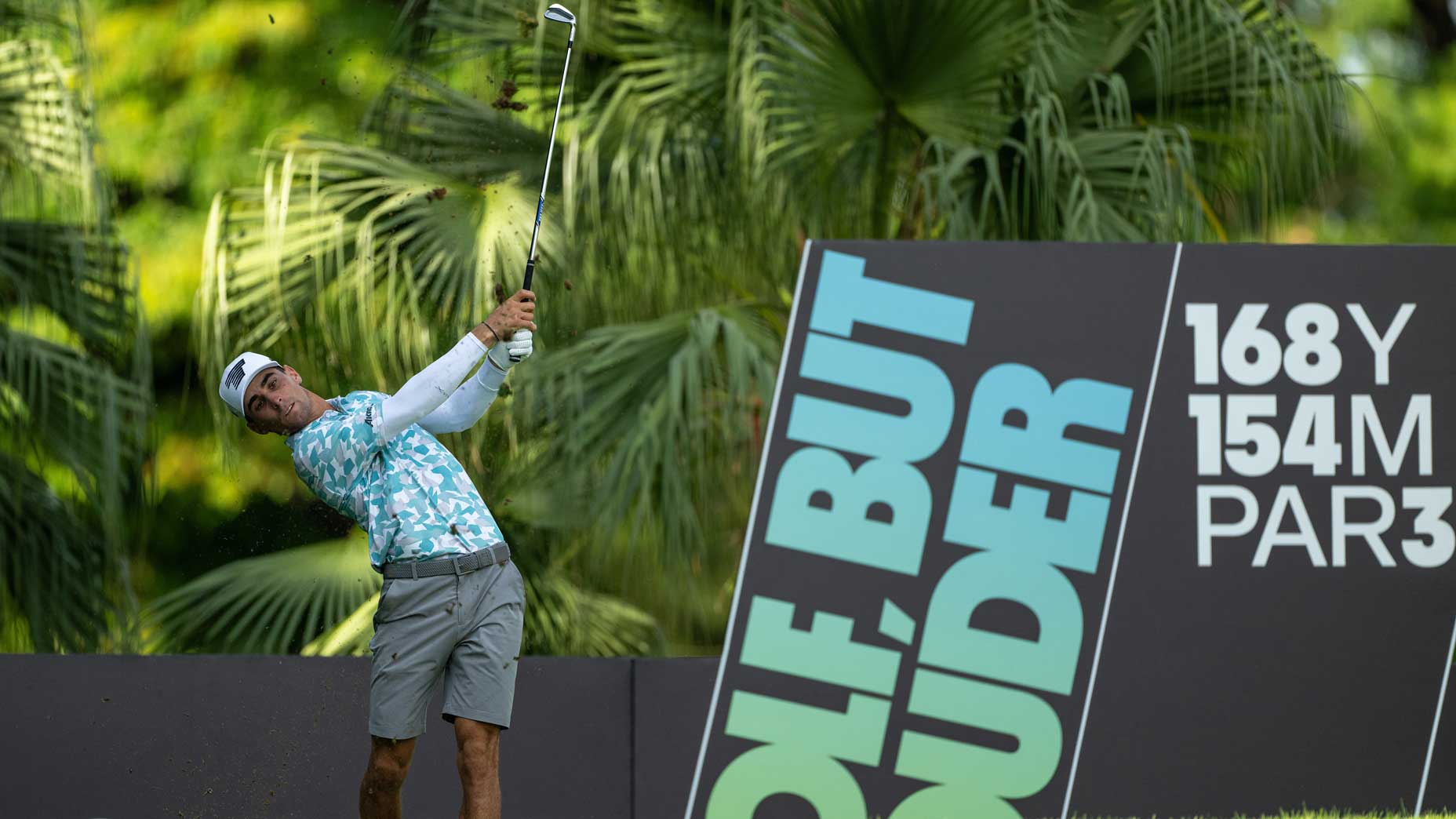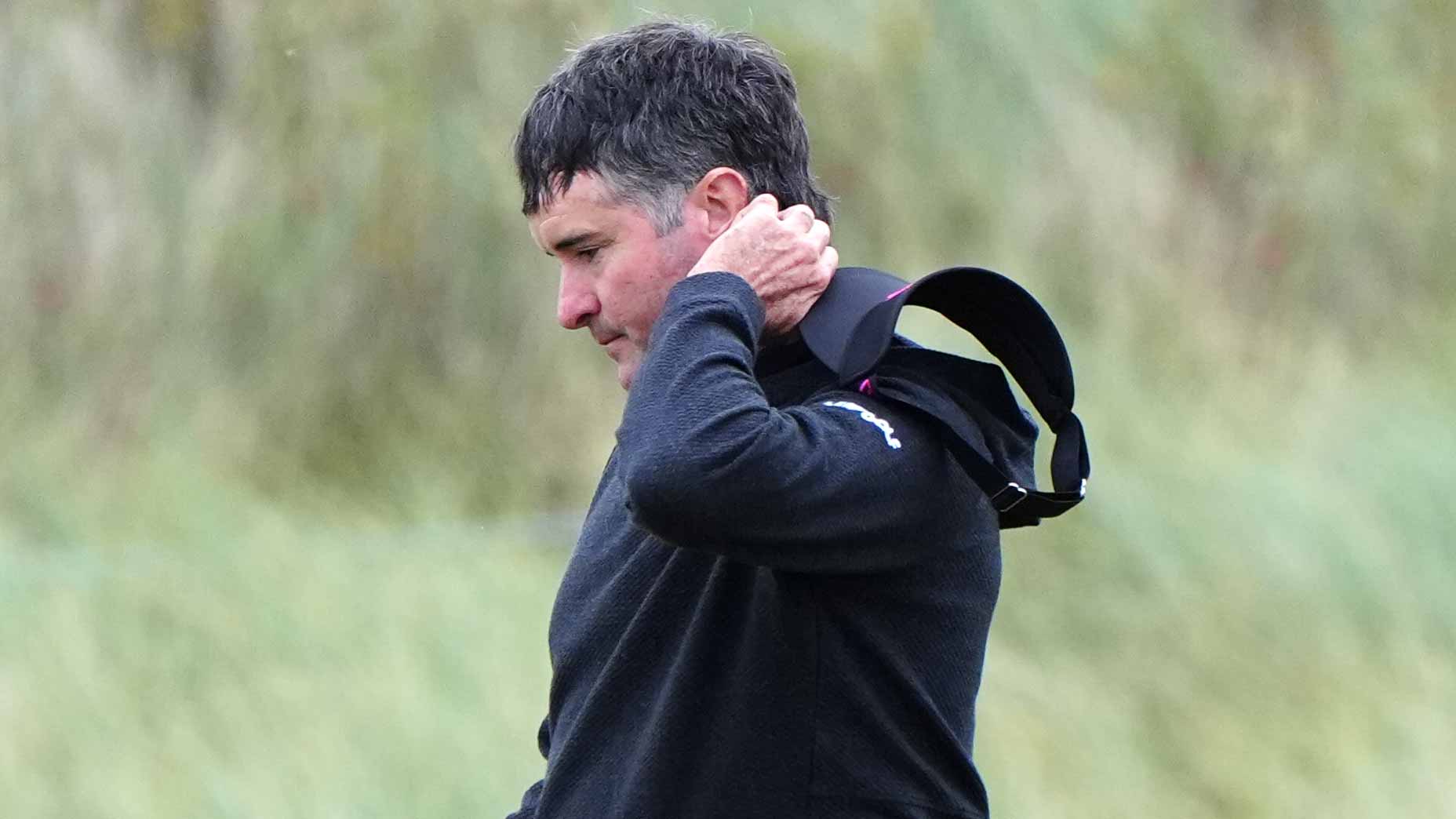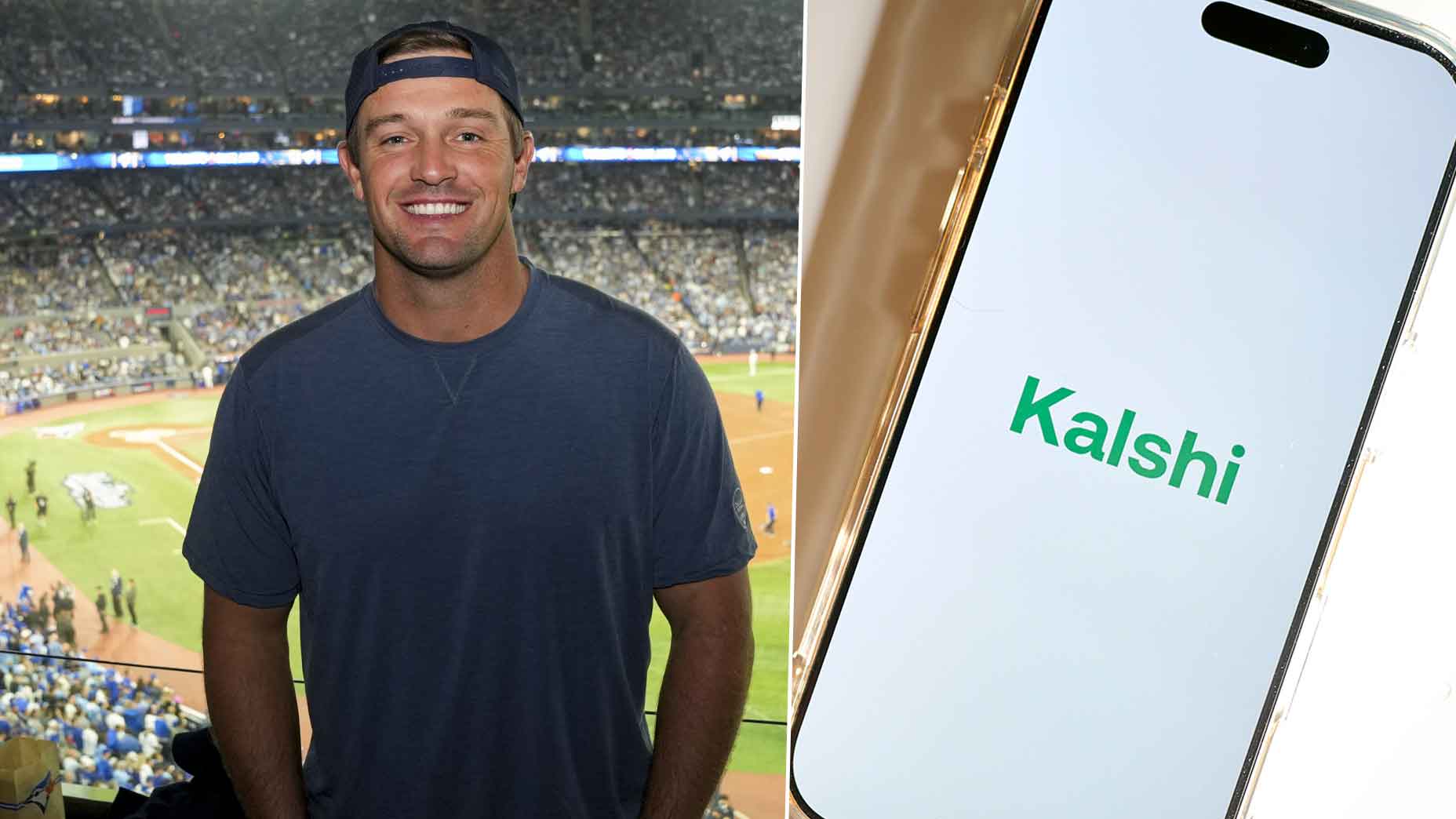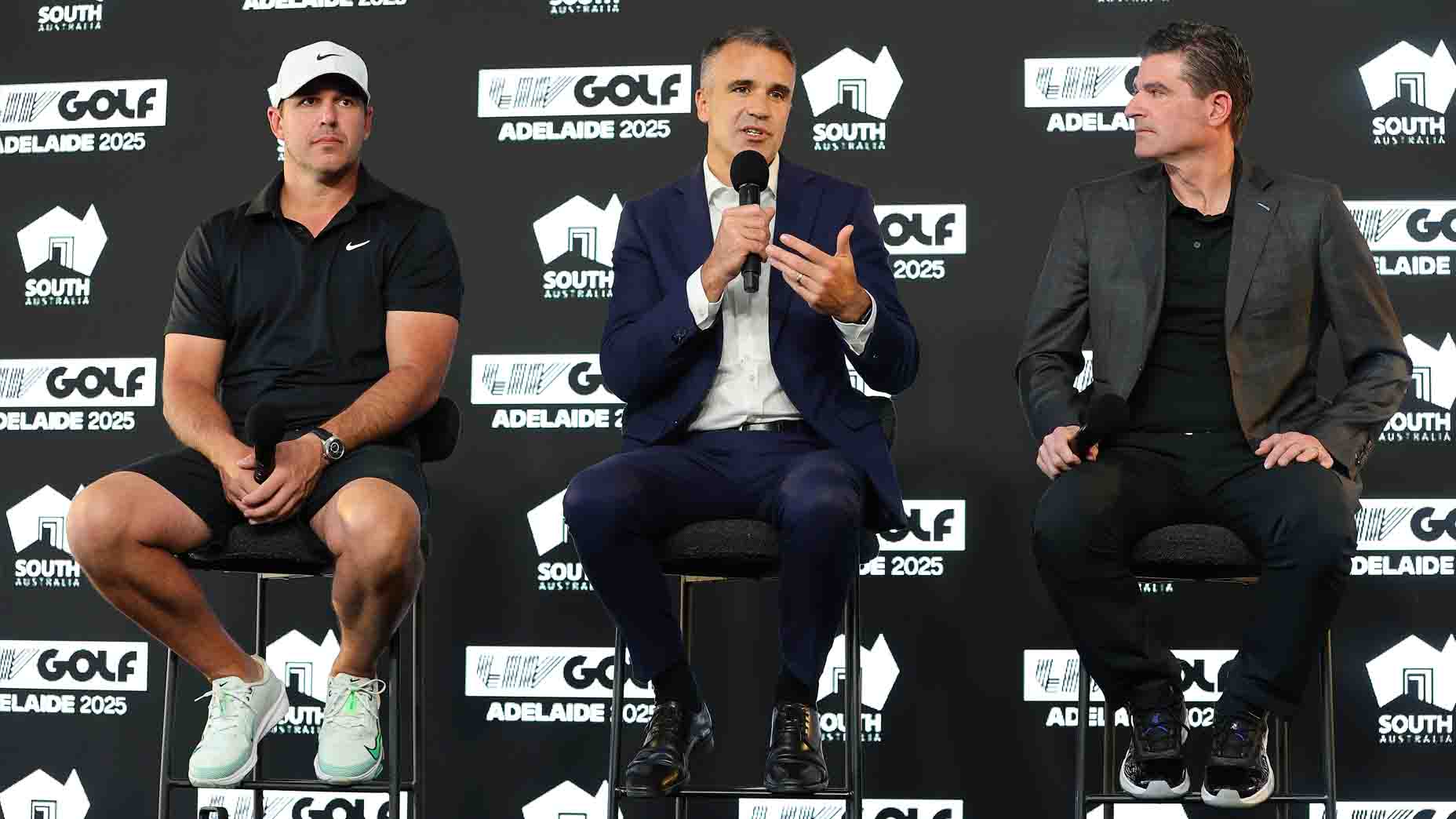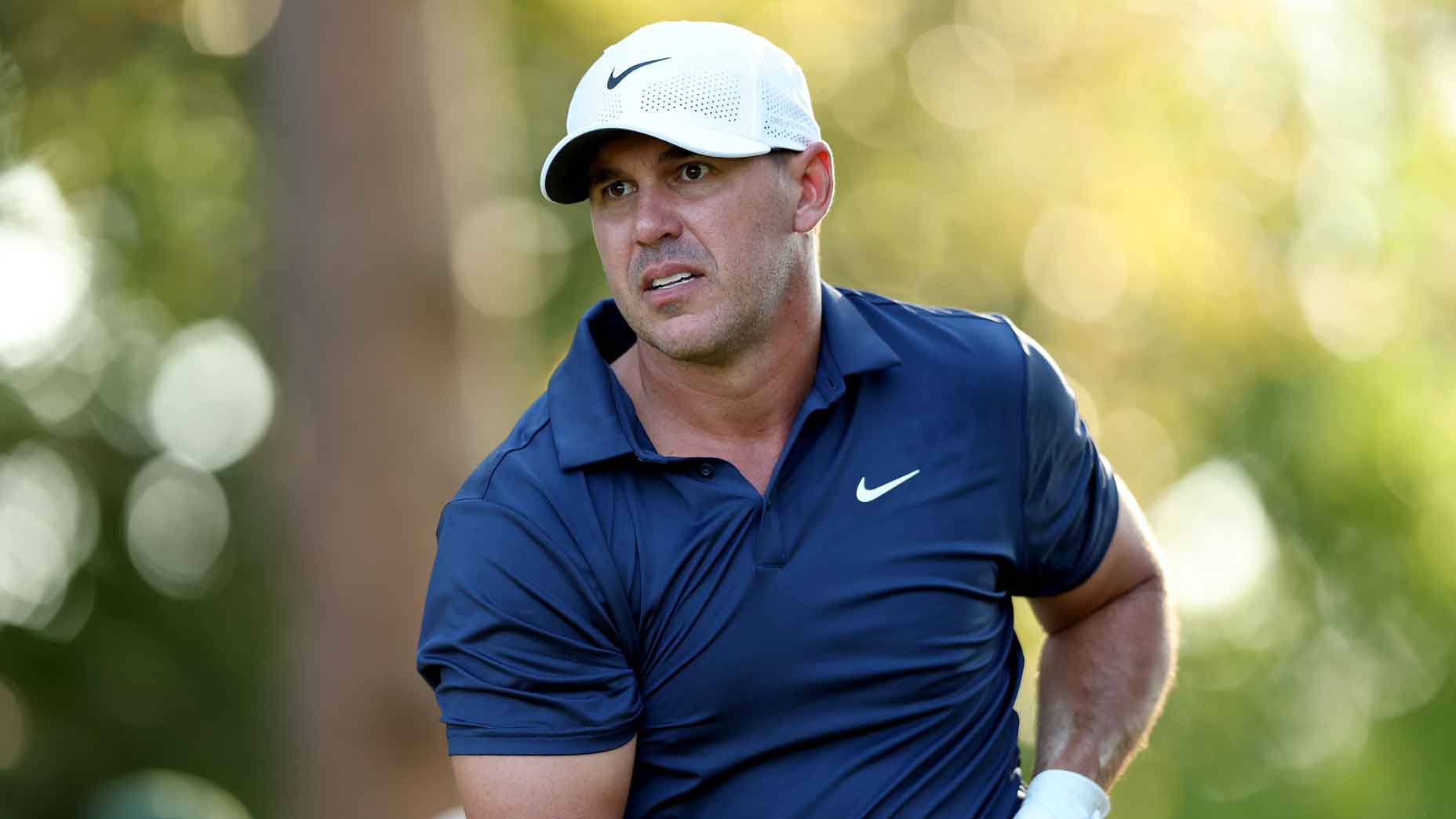When Bryson DeChambeau won the U.S. Open two weeks ago he took home a few valuable prizes in addition to the trophy. He claimed a first-place check of $4.3 million. He earned enough world ranking points to climb back into the top 10. And he tacked on another five years to his major championship eligibility.
When Tyrrell Hatton won LIV’s Nashville event by six strokes the following week he, too, earned a first-place check of $4 million. But he didn’t earn any ranking points, remaining at No. 22 in the world. And by the time next year’s majors come around, his eligibility for three of the four will be up in the air.
None of this is breaking news; the OWGR question has hung around LIV since its inception. And although some players who joined the Saudi-backed startup circuit were assured that they would get points, that hasn’t happened — and earlier this year LIV abandoned its quest altogether. Because the majors have long used the OWGR to build out their fields, this means trouble for LIV pros looking to compete in golf’s most prestigious events.
In his post-tournament press conference at the U.S. Open DeChambeau struck a conciliatory tone, suggesting the world of men’s pro golf should come back together. That’s a refrain that’s been echoed by certain voices on both sides of the LIV-PGA Tour divide, including Rory McIlroy and Lee Westwood in recent weeks. That may well happen; talks between the Tour and LIV’s funding source, the Saudi PIF, remain ongoing, and there’s a future that could include world ranking points for all. But if nothing happens, the divergent tales of DeChambeau and Hatton tell a different story: While LIV’s most famous players remain major-eligible, the rest of its berths are dwindling away.
LIV’s good news
LIV’s lessened presence at majors has been partially glossed over because many of its biggest names have retained their major eligibility. Winning a major gets you entry into every other major for the five years that follow, which means Dustin Johnson (2020 Masters), Phil Mickelson (2021 PGA) and Cam Smith (2022 Open Championship) have been in no danger of missing majors while Brooks Koepka (2023 PGA) and DeChambeau (2024 U.S. Open) have won since joining.
LIV is also guaranteed to have an ongoing presence at the Masters because the Masters gives its winners lifetime invitations and LIV has snapped up a bunch of green-jacket winners; that group is headlined by Jon Rahm (2023) and includes Sergio Garcia (2017), Reed (2018), Charl Schwartzel (2011) and Bubba Watson (2012, 2014) — as well as the aforementioned Johnson and Mickelson.
LIV players own a few other outstanding tournament exemptions. Martin Kaymer has an exemption at the PGA Championship until age 60 (thanks to his win in 2011), while Louis Oosthuizen (2010) and Henrik Stenson (2016) can play the Open until they’re 60 as past champs, too. Richard Bland’s recent Senior PGA title gets him into next year’s PGA Championship. And Hatton earned his way into next year’s Masters by way of a T9 finish this season, while Dean Burmester will make it back to the PGA thanks to a T12.
This year they proved there are other ways in, too. Sergio Garcia was among those to make it through qualifying for the U.S. Open, while other top worldwide finishes netted Open Championship berths to Burmester, Joaquin Niemann and David Puig.
So one thing is for sure: There will be talented, high-profile LIV golfers at the 2025 major championships.
LIV’s bad news
The other certainty is that, if nothing changes, there will be fewer of them each year that follows. Due to diminishing world ranking points, top LIV pros have already played fewer majors the last two years than they would have had they remained on the PGA Tour. Abraham Ancer hasn’t played a major in 2024. Neither has Paul Casey. Nor have Marc Leishman, Mito Pereira, Thomas Pieters, Ian Poulter, Brendan Steele, Harold Varner III and Matthew Wolff. Others have seen reduced starts: Talor Gooch, Joaquin Niemann and Patrick Reed were among the notable names to miss this latest U.S. Open.
Yes… I corrected that on later versions pic.twitter.com/fpEBDXp5q2
— Robopz (@Robopz) June 18, 2024
Let’s check out a chart via refined stathead Robopz, who has been laser-focused on exemptions and posted this on Twitter (he’s worth a follow for the golf nerds among you, here). Take a look at those numbers highlighted in yellow: Of the players on LIV’s current roster, 25 played the Masters in 2022 but just 13 played this year and 11 are guaranteed invites in 2025. The numbers are even bleaker for the other three majors: 42 now-LIV-players played the PGA in 2022, 16 played this season and nine are currently promised for next year. At the U.S. Open those numbers go to 30 (in 2022), 13 (this year) and six (for 2025), while things look similar at the Open Championship: 31 (in 2022), 14 (so far this year) and eight (thus far for next year).
Even those invitees aren’t necessarily LIV’s best. Take the Masters field, for instance: Schwartzel and Reed are No. 19 and 20 on LIV’s order of merit, Mickelson ranks No. 43 and Watson ranks No. 50. Meanwhile Nos. 1 (Niemann) 4 (Oosthuizen) and 5 (Burmester) on that list aren’t yet exempt. Others with long-term exemptions include Stenson (No. 36) and Kaymer (No. 38) while Carlos Ortiz (No. 9) and Abraham Ancer (No. 10) have nothing promised going forward.
This is hardly final; more LIV pros will end up in those fields. The Masters invited Niemann this year based on his worldwide play. The PGA invited Puig, Burmester and Gooch. And USGA head Mike Whan teased the idea of a future LIV exemption category. There will be other ways in through DP World Tour events, Asian Tour events or special invitations. But those invites are still likely to be limited and LIV pros are still unlikely to earn significant world ranking points unless, ironically, they play in all the majors.
LIV’s path back
Thinking big picture there are two realistic paths back to majors for LIV pros without current major exemptions. The one they’d likely prefer would be if the majors suddenly decided to have an extensive LIV-exempt list like, say, the top 12 players in the league getting into each major. The other route would involve some sort of unification with the PGA Tour, the chance to play in more world-ranking-point events and subsequently playing well enough to work their way back up the eligibility categories.
But there’s been little to suggest pro golf will take either of those paths by, say, next season.
In the meantime LIV players will continue to reap the financial rewards of their decision to jump to their new circuit. But in a complex pro golf landscape, these are the consequences: fewer chances to earn world ranking points, fewer chances win the game’s biggest events. Time will tell how those biggest events respond.
